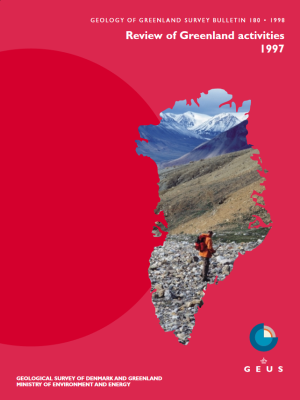Sequence stratigraphy of source and reservoir rocks in the Upper Permian and Jurassic of Jameson Land, East Greenland
DOI:
https://doi.org/10.34194/ggub.v180.5085Abstract
Approximately half of the hydrocarbons discovered in the North Atlantic petroleum provinces are found in sandstones of latest Triassic – Jurassic age with the Middle Jurassic Brent Group, and its correlatives, being the economically most important reservoir unit accounting for approximately 25% of the reserves. Hydrocarbons in these reservoirs are generated mainly from the Upper Jurassic Kimmeridge Clay and its correlatives with additional contributions from Middle Jurassic coal, Lower Jurassic marine shales and Devonian lacustrine shales. Equivalents to these deeply buried rocks crop out in the well-exposed sedimentary basins of East Greenland where more detailed studies are possible and these basins are frequently used for analogue studies (Fig. 1). Investigations in East Greenland have documented four major organic-rich shale units which are potential source rocks for hydrocarbons. They include marine shales of the Upper Permian Ravnefjeld Formation (Fig. 2), the Middle Jurassic Sortehat Formation and the Upper Jurassic Hareelv Formation (Fig. 4) and lacustrine shales of the uppermost Triassic – lowermost Jurassic Kap Stewart Group (Fig. 3; Surlyk et al. 1986b; Dam & Christiansen 1990; Christiansen et al. 1992, 1993; Dam et al. 1995; Krabbe 1996). Potential reservoir units include Upper Permian shallow marine platform and build-up carbonates of the Wegener Halvø Formation, lacustrine sandstones of the Rhaetian–Sinemurian Kap Stewart Group and marine sandstones of the Pliensbachian–Aalenian Neill Klinter Group, the Upper Bajocian – Callovian Pelion Formation and Upper Oxfordian – Kimmeridgian Hareelv Formation (Figs 2–4; Christiansen et al. 1992). The Jurassic sandstones of Jameson Land are well known as excellent analogues for hydrocarbon reservoirs in the northern North Sea and offshore mid-Norway. The best documented examples are the turbidite sands of the Hareelv Formation as an analogue for the Magnus oil field and the many Paleogene oil and gas fields, the shallow marine Pelion Formation as an analogue for the Brent Group in the Viking Graben and correlative Garn Group of the Norwegian Shelf, the Neill Klinter Group as an analogue for the Tilje, Ror, Ile and Not Formations and the Kap Stewart Group for the Åre Formation (Surlyk 1987, 1991; Dam & Surlyk 1995; Dam et al. 1995; Surlyk & Noe-Nygaard 1995; Engkilde & Surlyk in press). The presence of pre-Late Jurassic source rocks in Jameson Land suggests the presence of correlative source rocks offshore mid-Norway where the Upper Jurassic source rocks are not sufficiently deeply buried to generate hydrocarbons. The Upper Permian Ravnefjeld Formation in particular provides a useful source rock analogue both there and in more distant areas such as the Barents Sea. The present paper is a summary of a research project supported by the Danish Ministry of Environment and Energy (Piasecki et al. 1994). The aim of the project is to improve our understanding of the distribution of source and reservoir rocks by the application of sequence stratigraphy to the basin analysis. We have focused on the Upper Permian and uppermost Triassic– Jurassic successions where the presence of source and reservoir rocks are well documented from previous studies. Field work during the summer of 1993 included biostratigraphic, sedimentological and sequence stratigraphic studies of selected time slices and was supplemented by drilling of 11 shallow cores (Piasecki et al. 1994). The results so far arising from this work are collected in Piasecki et al. (1997), and the present summary highlights the petroleum-related implications.
Downloads
Published
Issue
Section
License
This article is distributed under a CC-BY 4.0 licence, permitting free redistribution and reproduction for any purpose, even commercial, provided proper citation of the original work. Author(s) retain copyright over the article contents.


